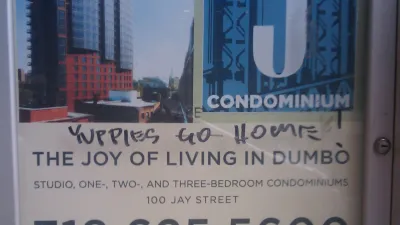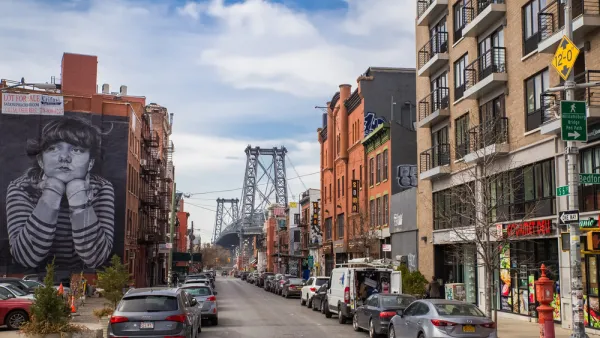As waves of gentrification sweep through the poor and middle class neighborhoods of New York City's outer boroughs, Stephen Smith argues that conservative, and outdated, zoning codes are to blame for the unequal balance between supply and demand.

Although some have taken issue with the extensive rezoning of New York that has taken place during the Bloomberg administration (since 2002, 40 percent of the city has been rezoned), for Smith those efforts have not gone far enough in replacing conservative zoning that keeps neighborhoods such as Williamsburg, Greenpoint and Bushwick "more or less frozen in 1961, when the city's zoning code restricted density and required parking in new construction."
According to Smith, the result of such controls is that as gentrification makes "significant inroads" in Brooklyn and Queens, "the housing that the poor are losing to the rich is not being replaced." And while such "conservative zoning" may be appropriate for "tree-lined blocks of Brooklyn Heights and Park Slope," for functional (misguided attempts to preserve manufacturing) and aesthetic (the houses are "some of the ugliest in the city") reasons northern Brooklyn should allow for more density.
"Zoned out of Williamsburg, Greenpoint and 'East Williamsburg,' gentrifiers have now reached the more densely populated black and Hispanic sections of Bushwick proper. Its poor and middle-class residents, who 20 years ago might have been able to afford apartments just a stop or two from Manhattan in Williamsburg, are now being displaced to neighborhoods like Canarsie, East New York and Jamaica, where they struggle with long commutes. It won't be too long until they're pushed so far from job centers in Manhattan that they leave the city entirely, contributing to the growing sense that New York is too expensive for ordinary people."
"If desirable neighborhoods don't start shouldering more of the burden of increased urban demand," concludes Smith, "American cities will soon end up like their counterparts in Europe, where everyone except the rich and the tourists are shunted off to the suburbs."
FULL STORY: Brooklyn's Affordability Crisis Is No Accident

Analysis: Cybertruck Fatality Rate Far Exceeds That of Ford Pinto
The Tesla Cybertruck was recalled seven times last year.

National Parks Layoffs Will Cause Communities to Lose Billions
Thousands of essential park workers were laid off this week, just before the busy spring break season.

Retro-silient?: America’s First “Eco-burb,” The Woodlands Turns 50
A master-planned community north of Houston offers lessons on green infrastructure and resilient design, but falls short of its founder’s lofty affordability and walkability goals.

Test News Post 1
This is a summary

Analysis: Cybertruck Fatality Rate Far Exceeds That of Ford Pinto
The Tesla Cybertruck was recalled seven times last year.

Test News Headline 46
Test for the image on the front page.
Urban Design for Planners 1: Software Tools
This six-course series explores essential urban design concepts using open source software and equips planners with the tools they need to participate fully in the urban design process.
Planning for Universal Design
Learn the tools for implementing Universal Design in planning regulations.
EMC Planning Group, Inc.
Planetizen
Planetizen
Mpact (formerly Rail~Volution)
Great Falls Development Authority, Inc.
HUDs Office of Policy Development and Research
NYU Wagner Graduate School of Public Service


























